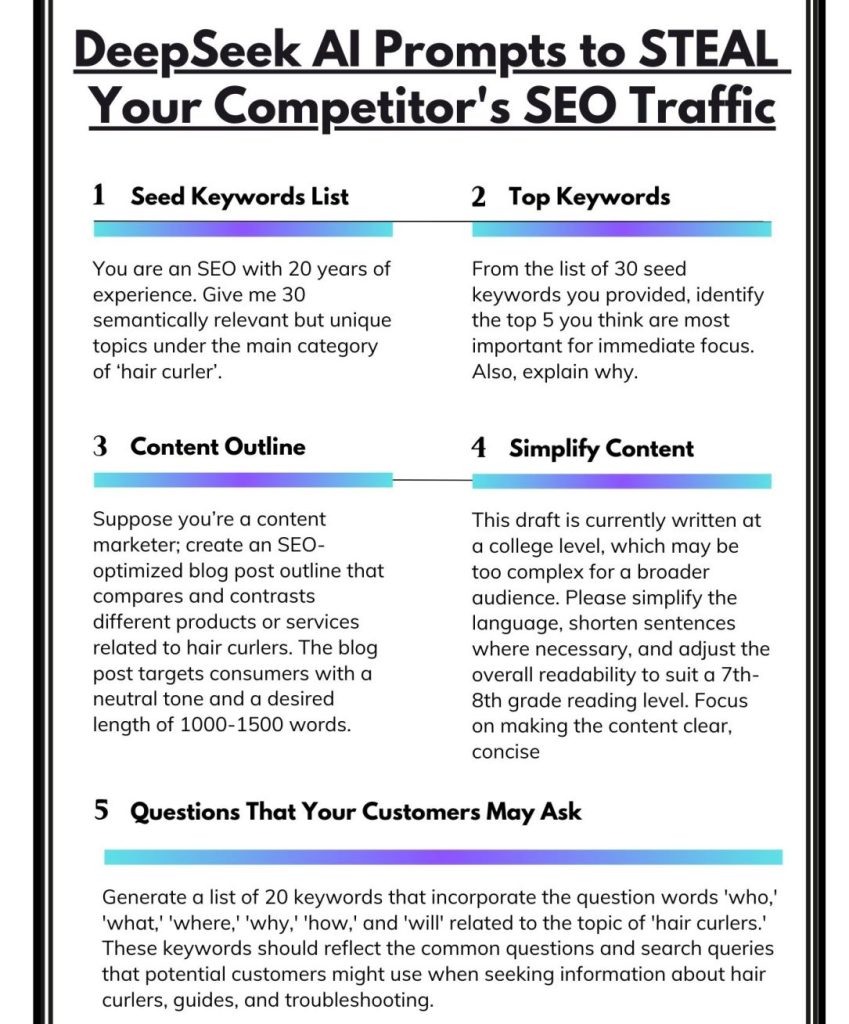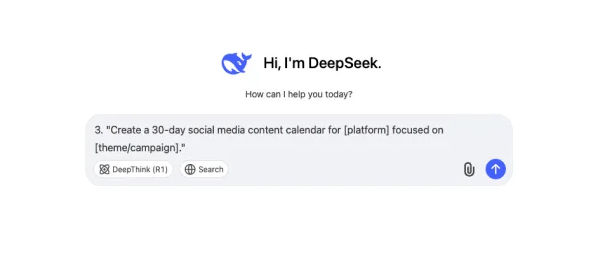It takes a long time to write good SEO blogs. You have to research, plan, write, and then make it readable. What if you can do all this quickly? What if you can write an entire SEO blog in 10 minutes? Sounds too good to be true?
This experience totally transformed my writing style. It is not about speed; it is about producing content that’s easy to read, which makes your audience trust you. Most writers generate garbage using large words and complicated thoughts, producing low views and no response. I discovered something better.
I will let you know how you can accomplish this with Deepseek R1 and 10 intelligent prompts.
What is Deepseek R1?
Deepseek R1 is an AI software that assists you in writing blogs fast. It employs clever technology to know what you need and provides you with ready content. It is even aware of SEO (Search Engine Optimization). This implies that it can assist you in creating content that Google approves of, thus your blog is able to attract more readers.
Why Use AI for SEO Blogs?
AI saves you time. Rather than sitting in front of a blank page, you receive ideas and content instantly. You need to concentrate on repairing and improving the blog, rather than typing out every word. This way, you work intelligently, rather than hard.
The 10 Smart Prompts to Write Your Blog Fast
I use 10 smart prompts with Deepseek R1. These prompts guide the AI to give me exactly what I need step by step. Follow these prompts and watch your blog come alive in 10 minutes!
Step 1: Find the Right Keywords
Prompt: “Give me a list of top SEO keywords about [your blog topic] for 2025.”
Keywords are the words people type into Google when they search. Choosing the right keywords helps your blog get found. The AI gives you a list of the best keywords to use.
Step 2: Create a Catchy Title
Prompt: “Write 5 catchy and SEO-friendly blog titles using the keyword [main keyword].”
A good title attracts readers and tells Google what your blog is about. Pick a title that is clear and includes your main keyword.
Step 3: Make a Blog Outline
Prompt: “Create an SEO blog outline for the topic [your blog topic]. Include headings and subheadings.”
An outline is like a roadmap for your blog. It helps you organize your thoughts. The AI gives you a clear structure with sections and points to cover.
Step 4: Write the Introduction
Prompt: “Write a simple and interesting introduction for a blog about [your topic] that includes the keyword [main keyword].”
Your introduction should catch your attention and explain what the blog will cover. The AI writes an easy-to-read introduction that uses your keyword naturally.
Step 5: Generate Content for Each Section
Prompt: “Write 150 words for the section titled [heading name] in simple English.”
Use this prompt for each heading in your outline. This way, you get clear, focused paragraphs for every part of your blog.
Step 6: Make the Content Easy to Read
Prompt: “Rewrite the following text in simple, conversational English with short sentences.”
Good SEO blogs are easy to read. Long or complex sentences can confuse readers. This prompt makes the content clear and friendly.
Step 7: Add Internal and External Links
Prompt: “Suggest 3 internal links to other blogs on [your website] and 2 external links to trusted sites related to [your topic].”
Links help Google understand your blog better and improve SEO. Internal links keep visitors on your site longer. External links add credibility.
Step 8: Write a Conclusion
Prompt: “Write a short conclusion that summarizes the blog and encourages readers to take action.”
A good conclusion wraps up the blog and tells readers what to do next. It can ask them to comment, share, or try a tip you shared.
Step 9: Generate Meta Title and Description
Prompt: “Write an SEO meta title and meta description for the blog about [your topic]. Use the main keyword.”
Meta titles and descriptions are what appear on Google search results. They should be catchy and include keywords to attract clicks.
Step 10: Final Proofread and Edit Suggestions
Prompt: “Check the following text for grammar mistakes and suggest improvements.”
AI can also help you fix mistakes and improve the flow. This makes your blog professional and trustworthy.
Putting It All Together
Here is how you write a blog using these prompts:
- Open Deepseek R1.
- Start with a keyword research prompt.
- Use the title prompt.
- Create your outline.
- Write your introduction.
- Generate content section by section.
- Make the text easier to read.
- Add links.
- Write a conclusion.
- Create meta tags.
- Proofread and edit.
This method helps you write fast and keep the quality high. You don’t have to spend hours writing or get stuck on ideas.
Tips to Make Your SEO Blog Even Better
- Use keywords naturally; don’t stuff them.
- Keep paragraphs short.
- Use bullet points and lists.
- Add images or videos if possible.
- Write for your readers, not just for Google.
- Always double-check facts and links.
Why This Works
Writing with AI like Deepseek R1 saves you time and energy. You get a clear structure and good content fast. The simple language and organized flow help readers understand your blog better. When readers stay longer, Google ranks your blog higher.
Final Thoughts
SEO blogging doesn’t have to be hard or slow. With Deepseek R1 and these 10 smart prompts, you can create SEO-optimized blogs in just 10 minutes. It’s about writing smart, not hard. Let AI help you do the heavy lifting, and focus on adding your personal touch.
Try this framework in your next writing session. You’ll be surprised how much you can get done in a short time.


